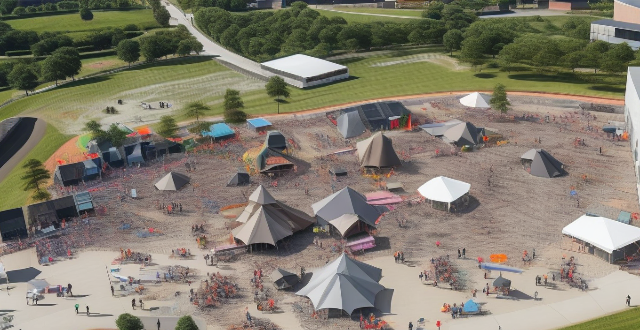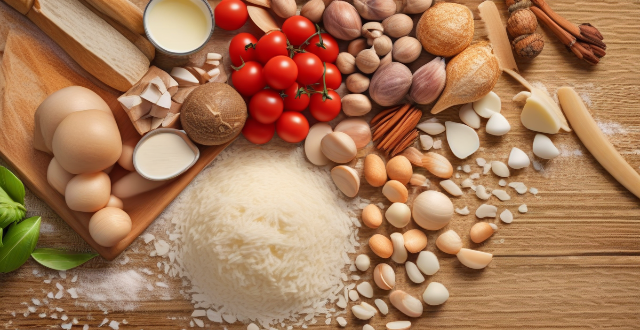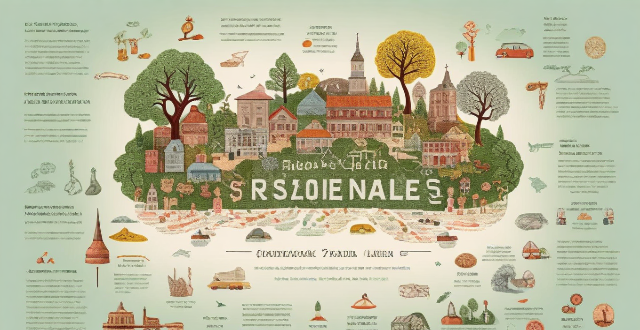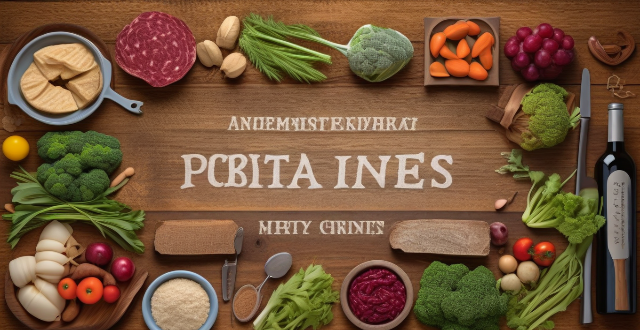Cuisine Cultural

In what ways does cultural fusion influence food and cuisine around the globe ?
Cultural fusion significantly impacts global cuisine by introducing diverse ingredients, techniques, and fusion cuisines. It encourages culinary innovation and creativity while also promoting the globalization of food cultures. Additionally, cultural fusion affects eating habits and dietary restrictions worldwide.

How has Indian cuisine evolved over time ?
The evolution of Indian cuisine is a result of various factors such as geography, climate, history, culture, and trade. India's diverse geography and climate have led to unique culinary traditions in each region, with coastal areas known for seafood dishes and northern plains famous for dairy products and bread. Historical influences like the Mughal era and British colonial period have also shaped Indian cuisine, introducing fusion dishes and bakeries. Trade routes and globalization have integrated foreign flavors into Indian dishes, while regional variations highlight the country's culinary diversity. Modern innovations include fusion dishes and healthier versions of traditional recipes. Overall, Indian cuisine reflects the nation's rich cultural diversity and adaptability to changing trends.

How does street food influence local cuisine and culture ?
Street food is a crucial element of local cuisine and culture, offering accessibility, diversity, economic benefits, cultural preservation, social interaction, and global influence. It supports local agriculture, encourages innovation, fosters community bonding, and attracts tourism, thereby shaping the culinary scene and cultural identity of a city.

Why is French cuisine, including desserts, considered among the finest in the world ?
French cuisine, including desserts, is renowned worldwide for its exquisite flavors, meticulous preparation, and artistic presentation. This reputation is due to factors such as historical significance, quality ingredients, artisanal methods, chef training, innovation, and attention to detail. French cuisine has a long history dating back to medieval times when it was influenced by various cultural invasions and trades. Over centuries, French chefs refined their techniques, creating a rich culinary tradition that emphasizes depth of flavor and precision in cooking methods. French cuisine places a high value on using fresh, high-quality ingredients, often sourced locally. The variety of ingredients available in different regions of France allows for a wide array of dishes and flavors. French baking traditions, such as those used in making croissants and baguettes, involve complex processes that yield exceptional results. Many French desserts, like macarons and éclairs, are handcrafted with care, ensuring each piece is of the highest quality. France is home to some of the best culinary schools in the world, where future chefs receive rigorous training. Young chefs often learn from experienced masters through apprenticeships, preserving techniques and recipes. French chefs are known for their innovative approaches to traditional dishes, pushing the boundaries of gastronomy. The integration of international flavors into classic French dishes keeps the cuisine dynamic and exciting. French cuisine emphasizes not just taste but also the visual appeal of the dish, making every meal an experience. The emphasis on all senses—smell, sight, taste, touch, and even sound—creates a comprehensive dining experience.

What are the best ways to explore the diverse cuisine of South America ?
South America is a continent rich in cultural diversity, and this diversity is reflected in its cuisine. Here are some of the best ways to explore the diverse cuisine of South America: 1. Visit local markets and street food stalls for authentic dishes. 2. Take cooking classes to learn how to make traditional dishes. 3. Dine at local restaurants for regional specialties. 4. Attend food festivals for a variety of South American dishes. 5. Travel off the beaten path for unique culinary traditions. 6. Try different cuisines within South America for a well-rounded understanding of the continent's culinary diversity.

Which Asian countries should I visit for a cultural experience ?
Asian countries offer a diverse range of cultural experiences, including festivals, traditional practices, and historic landmarks. Recommended destinations include Japan's Kyoto and Tokyo, China's Beijing and Shanghai, India's Delhi and Agra, Thailand's Bangkok and Chiang Mai, Vietnam's Hanoi and Ho Chi Minh City, and South Korea's Seoul and Busan. Each country offers unique cuisine and activities for travelers seeking a rich cultural experience.

How do food festivals promote cultural diversity and understanding ?
Food festivals are significant events that promote cultural diversity and understanding by offering educational opportunities, exposing attendees to new flavors, building community, impacting the economy positively, providing entertainment, enhancing social media presence and awareness, and promoting sustainability initiatives. These festivals facilitate cross-cultural dialogue, break down cultural barriers, and encourage a shared appreciation for global cuisine.

Can you provide examples of cultural fusion in different parts of the world ?
Cultural fusion, also known as cultural integration or hybridity, is a phenomenon that occurs when two or more distinct cultures interact and blend to create a new, unique culture. This process can be observed in various parts of the world, where different cultures have come together to form new traditions, languages, cuisines, art forms, and lifestyles. Some examples of cultural fusion include Korea-Japan cultural exchange, India-Pakistan cultural influence, Spain-Morocco cross-cultural interaction, France-England historical interactions, Mexico-United States border culture, and Caribbean-African diasporic cultures. These examples illustrate how cultural fusion can lead to the creation of new and exciting forms of expression across different aspects of society.

Can you recommend luxury resorts that offer unique cultural experiences ?
This article recommends several luxury resorts worldwide that offer unique cultural experiences. The Four Seasons Resort Bali at Sayan, Amangiri, Capella Ubud, The Brando, Como Shambhala Estate, Hacienda de San Antonio, and Mandapa, Ritz-Carlton Reserve are among the featured resorts. Each provides a blend of luxurious accommodations and immersive cultural activities such as dance classes, guided hikes, spiritual journeys, cooking classes, and more. These resorts are located in diverse settings, including jungles, deserts, mountains, and coastal areas, offering opportunities to explore local traditions, cuisine, history, and natural beauty.

What role does cultural fusion play in globalization ?
Cultural fusion plays a significant role in globalization by enhancing cross-cultural understanding, promoting innovation and creativity, facilitating economic growth, and enhancing tourism experiences. It refers to the blending of different cultures, traditions, and practices from various parts of the world. This process has become increasingly important as globalization continues to bring people closer together through trade, travel, and communication technologies.

How does Chinese cuisine differ from other Asian cuisines ?
Chinese cuisine is one of the most diverse and influential cuisines in the world, with a history that spans thousands of years. While there are many similarities between Chinese cuisine and other Asian cuisines, there are also several key differences that set it apart. These differences include the use of ingredients, cooking techniques, flavor profiles, and regional variations within each cuisine. Chinese cuisine often uses a wider variety of ingredients than other Asian cuisines, including both meat and vegetables. Additionally, Chinese cuisine often incorporates more spices and herbs into its dishes than other Asian cuisines. Another difference is the cooking techniques used. Chinese cuisine often involves stir-frying or steaming foods, while other Asian cuisines may rely more heavily on grilling or baking. Chinese cuisine also tends to use woks for cooking, which allows for high heat and quick cooking times. In terms of flavor profiles, Chinese cuisine has a distinct flavor profile that sets it apart from other Asian cuisines. Chinese cuisine often features bold flavors such as garlic, ginger, soy sauce, and chili peppers. In contrast, Japanese cuisine may have a lighter, more delicate flavor profile that emphasizes umami (savory) flavors. Thai cuisine, on the other hand, may be spicier and more aromatic than Chinese cuisine. Finally, another difference between Chinese cuisine and other Asian cuisines is the regional variations within each cuisine. China has a vast geographic area with many different regions, each with its own unique culinary traditions. Similarly, Japanese cuisine can vary greatly depending on whether it comes from the northern or southern regions of Japan.

How can cultural fusion be promoted within multicultural communities ?
Promoting Cultural Fusion in Multicultural Communities emphasizes the importance of understanding and valuing diversity, fostering dialogue and exchange, promoting inclusion and equity, supporting cultural preservation and innovation, implementing policies and practices, and building partnerships and collaborations. These strategies aim to create a community where diverse cultures are celebrated and respected, leading to a richer and more innovative community life.

How has technology impacted the process of cultural fusion ?
Technology has revolutionized the way we live, work, and communicate, significantly impacting cultural fusion. It has increased accessibility to different cultures through the internet, social media platforms, and messaging apps, leading to a greater exchange of ideas, beliefs, and practices between cultures. Online courses have made education more accessible than ever before, promoting understanding and appreciation of diverse cultures. Travel and tourism have been enhanced by technology through virtual tourism and navigation apps, allowing for greater engagement with local cultures during trips. Food blogging and social media platforms have played a significant role in promoting cultural fusion through cuisine, while online grocery shopping has facilitated the creation of authentic dishes from various parts of the world. Overall, technology has facilitated the exchange of ideas, beliefs, and practices between cultures, leading to greater levels of cultural integration in the future.

What are some ways to incorporate cultural traditions into a family dinner ?
Incorporating cultural traditions into a family dinner can be achieved by setting the table with traditional elements, cooking traditional dishes, sharing cultural stories and traditions, involving children in cultural traditions, and celebrating special occasions. This creates a meaningful and enjoyable cultural experience for everyone involved.

What are the most popular pasta shapes used in Italian cuisine ?
The article discusses the most popular pasta shapes in Italian cuisine, highlighting their unique characteristics and ideal pairings. The list includes iconic shapes like spaghetti and linguine, as well as more distinctive forms like fusilli and orecchiette. The popularity of each shape often depends on the region and local traditions, with some shapes being better suited for light sauces and others for heartier dishes. Overall, the article emphasizes the diversity and versatility of pasta in Italian cuisine.

What kind of ingredients are commonly used in Japanese cuisine ?
Japanese cuisine is known for its unique flavors, fresh ingredients, and beautiful presentation. The most commonly used ingredients in Japanese cooking include white rice, brown rice, sweet rice, tuna, salmon, squid, shellfish, chicken, beef, pork, cabbage, eggplant, green onions, mushrooms, soy sauce, miso, udon noodles, soba noodles, ramen noodles, rice vinegar, sesame oil, nori, wasabi, and pickled ginger. These ingredients combine to create the diverse and delicious flavors that make Japanese cuisine so beloved around the world.

Is there a risk that cultural fusion could result in cultural homogenization ?
The text discusses the risk of cultural homogenization that comes with cultural fusion, which is the blending of different cultures. This process leads to the loss of distinctive features of individual cultures as they become increasingly similar due to globalization, migration, and other forms of cultural interaction. The phenomenon of cultural homogenization is characterized by the loss of heritage, dominance of global culture, and erosion of local practices. Several factors contribute to this, including globalization, mass media, migration, and economic influence. To mitigate the risk, it is essential to promote cultural preservation and exchange while discouraging the domination of any single culture. This can be achieved through supporting local cultures, cultural exchange programs, education, and policy measures.

How do you describe the taste of authentic Mexican cuisine ?
Mexican cuisine is a vibrant and complex blend of flavors that can be both bold and subtle. Here are some key characteristics that describe the taste of authentic Mexican food: ### Spicy Heat Chili peppers and spices like cumin, oregano, and cinnamon add depth of flavor to many dishes. ### Acidity and Tanginess Lime juice and tomatoes provide refreshing acidity and tanginess, while also contributing sweetness. ### Earthy and Nutty Flavors Beans, corn, and nuts offer earthy undertones and richness to Mexican cooking. ### Sweetness and Fruitiness Fruits such as pineapple and mango, as well as vegetables like sweet potatoes, bring a touch of sweetness to savory dishes. ### Umami Richness Cheese and slow-cooked meats contribute deep, savory flavors to Mexican cuisine. ### Herbaceous Notes Cilantro and epazote provide distinctive, fresh flavors that are essential in traditional cooking. ### Texture Variety Crunchy vegetables and creamy avocado-based sauces offer a range of textures that balance spicier elements. ### Bold and Aromatic Garnishes Onions and cilantro are often used as garnishes, adding sharpness and freshness to dishes. Overall, authentic Mexican cuisine is a harmonious combination of spicy, tangy, sweet, umami, herbaceous, and textural elements that create a complex and satisfying gustatory experience.

Can cultural fusion lead to a loss of cultural identity ?
Cultural fusion, the blending of different cultures, has been a phenomenon for centuries. However, with globalization and the rise of social media, cultural fusion has become more prevalent than ever before. While it can lead to the creation of new and exciting cultural expressions, it can also raise concerns about the potential loss of cultural identity. This article explores whether cultural fusion can indeed lead to a loss of cultural identity by examining the benefits of cultural fusion, the potential loss of cultural identity, and ways to maintain cultural identity amidst fusion.

What challenges does cultural fusion present in terms of preserving traditional cultures ?
This essay discusses the challenges of cultural fusion in preserving traditional cultures, including loss of authenticity, erosion of cultural identity, commodification of culture, and resistance to change. It emphasizes the need for a nuanced approach that values both preservation and exchange.

How can I learn about a culture through its cuisine during my travels ?
Exploring a culture through its cuisine during travels can be achieved by embracing local eateries, visiting markets, taking cooking classes, dining with locals, attending food festivals, reading and researching, and asking questions. This immersive experience allows travelers to understand the history, traditions, and essence of a place through every dish and ingredient.

What are the best destinations for a cultural exploration journey ?
The text introduces five destinations that are ideal for individuals interested in cultural exploration. Each location offers unique experiences that allow travelers to immerse themselves in the local history, traditions, and way of life. The destinations include: 1. **Kyoto, Japan** - Known for its UNESCO World Heritage sites, tea ceremonies, and geisha culture. Highlights include visiting the Fushimi Inari Shrine, the Golden Pavilion, and enjoying a traditional Kaiseki dinner. 2. **Fez, Morocco** - Famous for its ancient medina, cultural workshops, and music and dance performances. Key activities involve exploring the medina, visiting the Al Quaraouiyine Mosque and University, and tasting Moroccan street food. 3. **Cusco, Peru** - Offers insights into Incan ruins, Andean culture, and a unique ecosystem. Visitors can hike the Inca Trail, attend weaving demonstrations, and participate in the Inti Raymi Festival. 4. **Marrakech, Morocco** - Features souks and bazaars, serene gardens and riads, and performing arts. Notable experiences include tours of the Bahia Palace, mint tea in a traditional Moroccan house, and Gnaoua trance music performances. 5. **Brussels, Belgium** - A multilingual city with Art Nouveau architecture, renowned chocolatiers, and breweries. Key attractions are the Grand Place, the Royal Museums of Fine Arts of Belgium, and a variety of Belgian beers. Each destination provides distinct cultural experiences that cater to different interests, from historical monuments to modern multicultural cities.

What challenges do people face when participating in cultural exchanges ?
Cultural exchanges, while enriching, present challenges like language barriers, cultural differences, adjustment difficulties, stereotyping, legal and practical issues, and emotional strain. To overcome these, participants should be open-minded, patient, and willing to learn, with preparation through training, classes, and mentorship.

What are the benefits of embarking on a cultural exploration journey ?
Embarking on a cultural exploration journey is an enriching experience that offers numerous benefits, including expanding your horizons, enhancing communication skills, boosting creativity, developing cultural sensitivity, strengthening adaptability, building global awareness, forging lasting connections, and promoting personal growth and self-discovery.

What are the best places to celebrate a milestone event with fine dining in Chicago ?
Chicago offers diverse fine dining options for celebrating milestone events, from innovative modernist cuisine at Alinea to traditional deep-dish pizza at Giordano's. Other notable places include Boka for a contemporary New American menu and The Publican for farm-to-table dishes. For French cuisine, Tru provides an elegant setting, while RPM Italian offers classic Italian in a sleek environment. Oriole and Smyth + The Loyalist offer unique experiences focusing on seasonal ingredients and boutique beef, respectively. These top spots ensure memorable celebrations for any special occasion.

How can we promote cultural diversity in our community ?
Promoting cultural diversity is crucial for fostering understanding and respect among people from different backgrounds. To achieve this, we can organize cultural events, promote multicultural education, encourage intercultural dialogue, support local businesses owned by diverse individuals, increase diverse representation in media, and promote cultural exchange programs. By embracing these strategies, we can create an inclusive and harmonious society where everyone feels valued and respected.

What are some local experience activities that involve food and drink ?
The text provides a summary of various local experience activities involving food and drink. These include cooking classes, food market tours, brewery and winery visits, culinary walking tours, farm-to-table dinners, food festivals, ethnic cuisine experiences, private dining experiences, gourmet safaris, and interactive restaurant concepts. Each activity offers a unique way to explore local cuisine and culture, providing insights into the daily life of locals and their eating habits.

How can I find authentic cultural experiences while traveling ?
Finding authentic cultural experiences while traveling is key to immersing oneself in the local culture. Here are some tips on how to do so: 1. Research before you go to learn about local customs and traditions, and read travel blogs for insights into hidden gems. 2. Connect with locals by staying with a host family or attending community events. 3. Explore on foot or by public transportation to discover less touristy areas and visit local markets and shops. 4. Try local cuisine by eating where the locals eat and taking a cooking class. 5. Participate in cultural activities such as workshops, classes, festivals, and celebrations. 6. Use technology wisely by downloading language apps and following local influencers on social media. 7. Be open-minded and respectful by embracing differences and showing respect when visiting religious sites or participating in cultural activities. 8. Immerse yourself fully by limiting screen time and reflecting on your experiences. By following these tips, travelers can find authentic cultural experiences that will enrich their travels and leave them with lasting memories.

What is the impact of cultural exchange on globalization ?
This essay explores the impact of cultural exchange on globalization. It states that cultural exchange plays a crucial role in enhancing mutual understanding and respect among nations, promoting economic growth and development, fostering international collaboration and cooperation, encouraging tourism and travel, and preserving cultural heritage and traditions. The essay concludes that as our world becomes increasingly interconnected, cultural exchange will continue to play a vital role in shaping our future together.

What are the benefits and drawbacks of cultural fusion in education systems ?
Cultural fusion in education systems can enhance global awareness and improve intercultural communication, but it may also lead to a loss of cultural identity and stereotyping. To maximize its benefits, cultural fusion should be implemented thoughtfully and effectively.